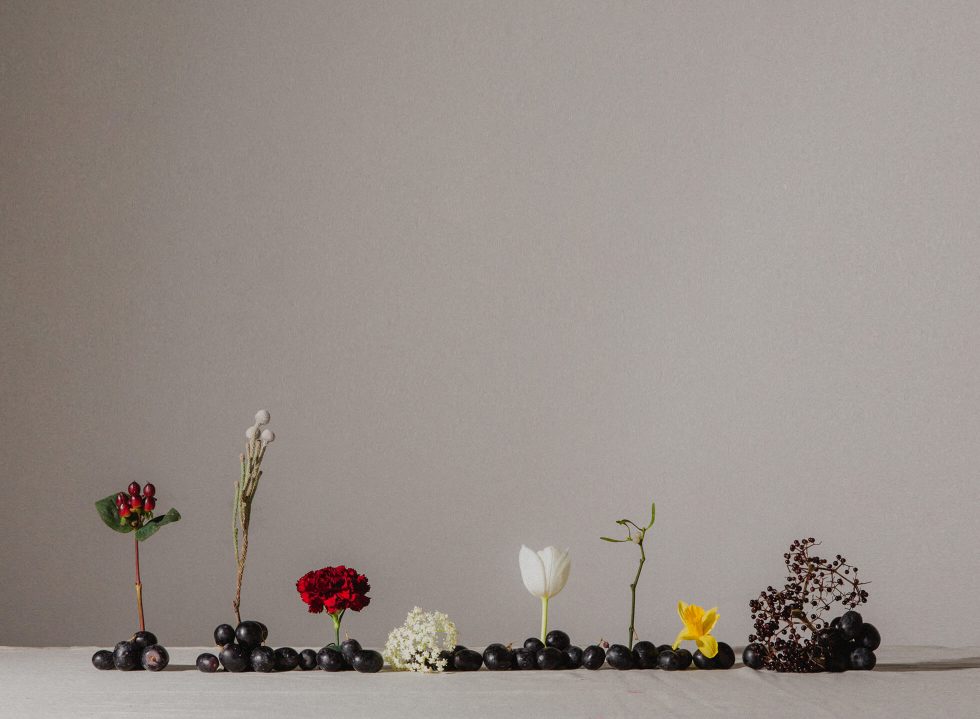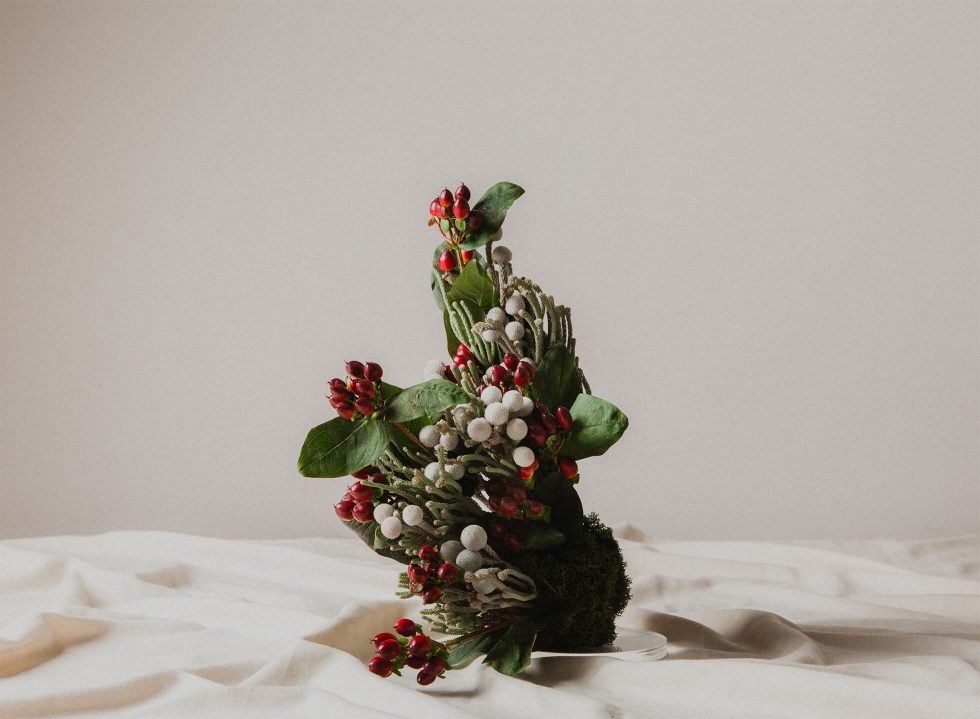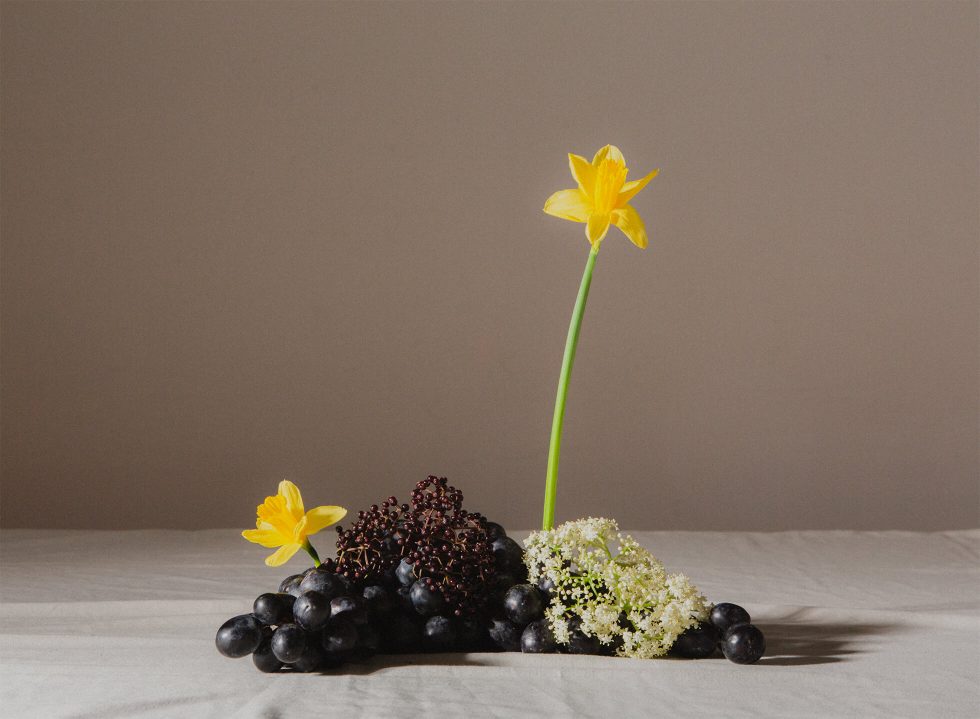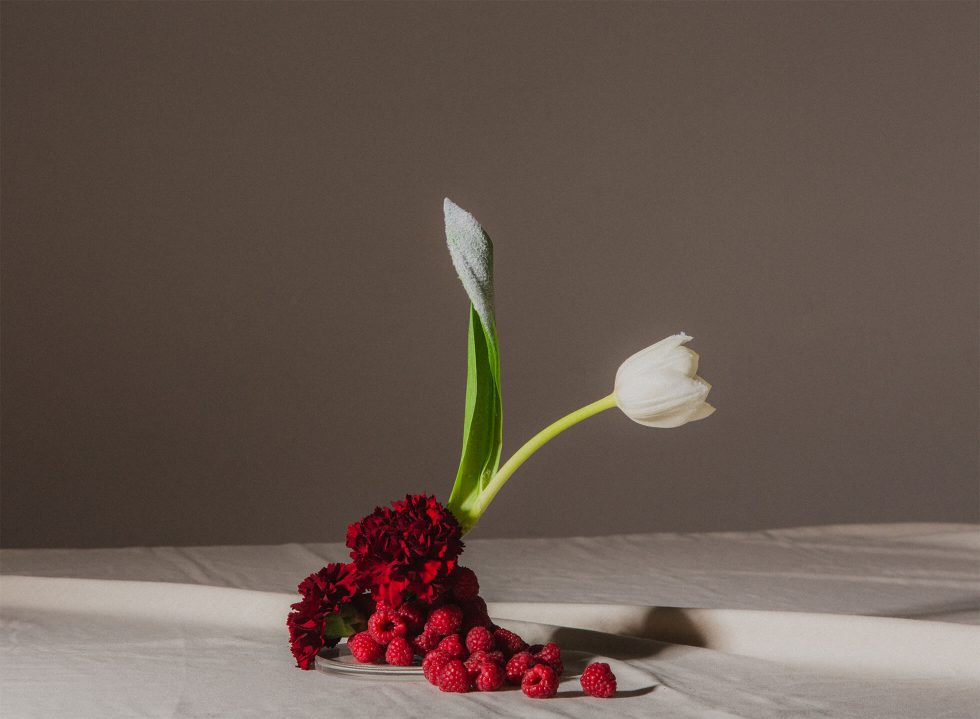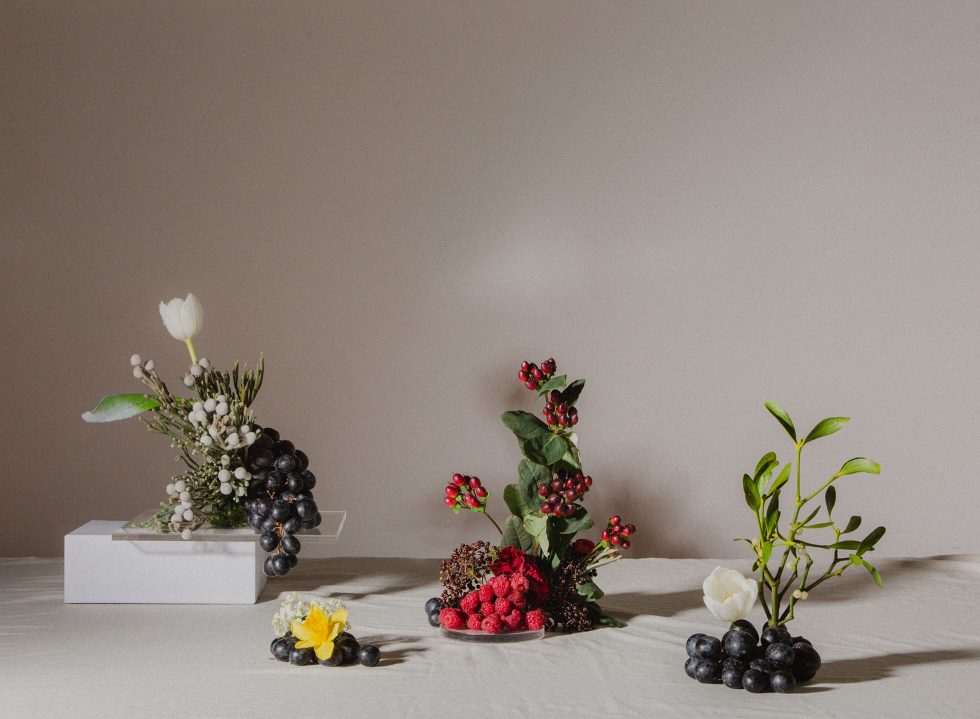If you are one to spy on the latest fashion and design trends, then the return of unconventional and experimental flower arrangements may not strike as a story of novelty. From the artistic Japanese tradition of Ikebana, meaning “making flowers alive”, to having the 90’s gerberas back in the spotlight, the unusually-crafted floral assemblage has breathed in more shapes and colours into the modern-day floristry—evidenced by the head-turning pop-up installation in the 2017 Met Gala to the emergence of unconventional flower studios in NYC.
“It’s definitely trending here as well,” said Jovina Ng, the florist behind Jakarta-based COLUMN Flowers, on the blooming interest. Unlike conventional floral arrangements that utilise mainstream flowers, unconventional ones are all about going against the archetypes by experimenting with a different variety of objects, blooms and foliage, pushing the creative boundaries of floral arrangements and making the presentations multidimensional as well as personal: an adornment for lovers of the art.
This type of floral arrangement is particularly inspired by works in fashion, art and design from the near-past and is a growing trend in contemporary floristry that emphasises the character and personality of each flower. The styles can range from exceptionally dramatic—featuring sculptural arrangements and striking textures—to effervescent and tropical, as opposed to traditional or ready-made design styles that are limited to the types of blooms and vessels.
For flower artists like Jovina, one of the distinguishing contemporary approaches she applies in her craft is the use of edible plants, from elderberries to everyday fruits like grapes, or unique vessels as part of its unconventional composition, elevating the experience and ambience at your living space to become more design-forward and interactive.
In COLUMN Flower’s design principle, their aesthetics heavily lean towards minimalism that features clean lines and asymmetrical framework to highlight the florets. “Typically, my arrangements and styles are minimalistic and more architectural-looking. For me, flowers should highlight the flowers themselves, instead of being thoughtlessly put into one big vase,” explained Jovina, who studied fashion in Italy before she shifted to floristry. “I feel like if we highlight the flowers, people can appreciate it more.”
With the attention-to-detail approach in structuring florals, greenery and branches, the mood and aesthetics that blush in the presence of unusual flower arrangements can be captivating. In Jakarta, the trend blooms in the event organising business with increasingly more and more artists like Jovina catering to private events that are set to impress.
Exhibited in this feature is COLUMN’s custom-built arrangement that is expressive of December’s blooms: dominated in dark red and burgundy from the edible elderberries, the compositions are imbued and balanced with vibrant colours of hypericum and tall with the exotic winter flower, brunia silver. On top of that is a touch of mistletoe, featured in celebration of the joyful season.
Jovina, whose minimalist floral arrangements are inspired by fashion houses such as Raf Simons, Jil Sander and Irving Penn’s fashion and still life photography, shared that her method in arranging the flowers include “inspecting and analysing each of the flowers’ movement, personality and element” before deciding on a specific styling.
While attempting this craft can be done at home, contemporary flower artistry is closest to being a fine art project where a certain creative sensitivity is involved. Therefore, for its appreciators, keeping the artwork alive is always of interest, especially because its value moves with time until the flowers wither. Jovina advises keeping the arrangement away from direct sunlight and water daily to prolong its life as a centrepiece.
“Each flower actually has its own personality; in which way it would grow, how they move, how they stay still. I would like to take those elements into consideration to highlight its movement,” closed Jovina. Behind every contemporary floral arrangement is an all-encompassing artistic approach where studying the petals and objects is a prerequisite—a key to achieving the visually interactive flower assemblage that distinguishes this movement in today’s floristry scene.
